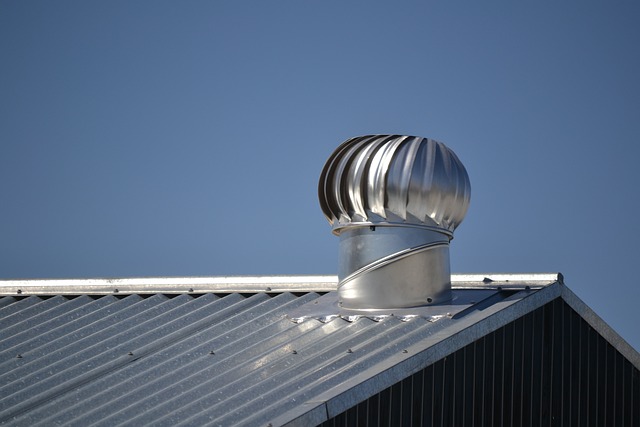Synthetic roofing is a modern, affordable, and eco-friendly alternative to traditional roofing, offering durability, low maintenance, and quick installation. Made from sustainable materials like polyurethane and PVC, these roofs mimic popular styles while providing superior weather resistance and easy repair. Ideal for both residential and commercial properties, especially in harsh climates, synthetic roofing's lightweight design reduces structural strain and offers cost savings over conventional options. Customizable and visually appealing, it represents a smart investment for property owners seeking style, functionality, and sustainability.
“Elevate your home or building’s aesthetic with stylish and affordable synthetic roofing—a modern game-changer in the construction industry. This comprehensive guide explores the world of synthetic roofing, from understanding its benefits to embracing its design potential. Discover durable, eco-friendly materials that offer a cost-effective alternative to traditional roofs. Learn about popular design trends, customization options, and installation processes.
Explore case studies showcasing stunning synthetic roofs and gain insights into maintenance tips for long-lasting results. Additionally, we’ll help you navigate finding reliable synthetic roofing services, ensuring a seamless experience from selection to installation.”
- Understanding Synthetic Roofing: Materials and Benefits
- – Definition of synthetic roofing
- – Types of durable synthetic materials used in modern roofing
- – Advantages over traditional roofing: lightweight, eco-friendly, cost-effective
Understanding Synthetic Roofing: Materials and Benefits
Synthetic roofing has emerged as a game-changer in the construction industry, offering both modern aesthetics and practical benefits at an affordable price point. These roofs are crafted from durable synthetic materials, designed to mimic the look of traditional roofing options like shingles or tiles while providing exceptional longevity and low maintenance. With a growing emphasis on sustainable and eco-friendly practices, synthetic roofing has gained significant traction as an alternative to conventional materials.
The materials used in modern synthetic roofing are lightweight yet remarkably robust, ensuring easy installation and reduced strain on structural supports. This makes synthetic roof installation a swift and cost-effective process, appealing to both homeowners and commercial property owners alike. Moreover, these roofs offer superior resistance to extreme weather conditions, including high winds, heavy rainfall, and UV damage, making them a reliable choice for regions prone to harsh climates. Easy maintenance and the ability to quickly repair any damaged areas further contribute to their durability and cost-effectiveness over time.
– Definition of synthetic roofing
Synthetic roofing has emerged as a revolutionary option in the realm of residential and commercial roofing. Unlike traditional materials, synthetic roofs are crafted from durable, lightweight synthetic materials that offer a unique blend of style and affordability. These modern synthetic roofing solutions are designed to mimic the look of popular roofing styles like shingles, tiles, or metal, providing an aesthetically pleasing alternative without breaking the bank.
With synthetic roof installation, property owners can benefit from eco-friendly materials that require minimal maintenance. This cost-effective approach to roofing is not only a smart financial decision but also contributes to sustainability. Moreover, synthetic roofs are highly durable and resistant to extreme weather conditions, ensuring longevity and peace of mind for homeowners. Should any damage occur, synthetic roof repair services are readily available, making it an investment that stands the test of time.
– Types of durable synthetic materials used in modern roofing
In modern roofing, a variety of durable synthetic materials are being utilised to offer both stylish and affordable options for homeowners. These innovative materials range from high-performance polyurethanes to flexible PVCs, each designed with longevity and aesthetics in mind. Polyurethane roofs, known for their exceptional strength and flexibility, provide an eco-friendly alternative to traditional roofing while ensuring minimal maintenance requirements. On the other hand, PVC roofing has gained popularity due to its cost-effectiveness, durability, and lightweight properties, making it easier to install and maintain.
The allure of modern synthetic roofing lies in its ability to mimic natural materials like tiles or shingles while offering enhanced benefits. These synthetic roofs are not only visually appealing but also highly resistant to extreme weather conditions, including heavy rain, snow, and strong winds. Moreover, their low weight makes them ideal for building renovations or retrofits, eliminating the need for extensive structural modifications. With advanced manufacturing techniques, these materials can be easily customised to match any design aesthetic, ensuring that a stylish roof is within reach without breaking the bank.
– Advantages over traditional roofing: lightweight, eco-friendly, cost-effective
Synthetic roofing offers a modern alternative to traditional roofing materials, with several compelling advantages. One of the key benefits is its lightweight nature; synthetic roofs are significantly lighter than their asphalt or metal counterparts, making installation and repair easier and more efficient. This also translates to reduced strain on structural supports, which can be particularly beneficial for older buildings or those in areas prone to high winds.
From an environmental perspective, eco-friendly synthetic roofs are a superior choice. These materials are made from sustainable resources and are fully recyclable, making them an excellent option for those looking to reduce their carbon footprint. Moreover, synthetic roofing is cost-effective; it’s affordable both in terms of initial installation and long-term maintenance, as it requires less frequent replacement and repairs compared to traditional roofs.
Modern synthetic roofing offers an attractive and sustainable solution for home and building owners seeking both style and affordability. With a range of durable synthetic materials available, from lightweight to eco-friendly options, synthetic roof installation can provide long-lasting protection while keeping costs down. Whether repairing or replacing a roof, these innovative materials offer numerous advantages over traditional roofing, ensuring a stylish, low-maintenance finish that stands the test of time. Embrace the future of roofing with cost-effective synthetic roofing services for a visually appealing and environmentally conscious choice.
